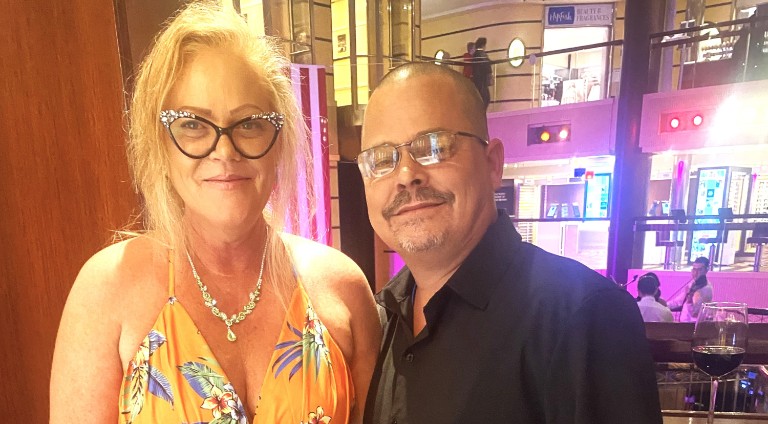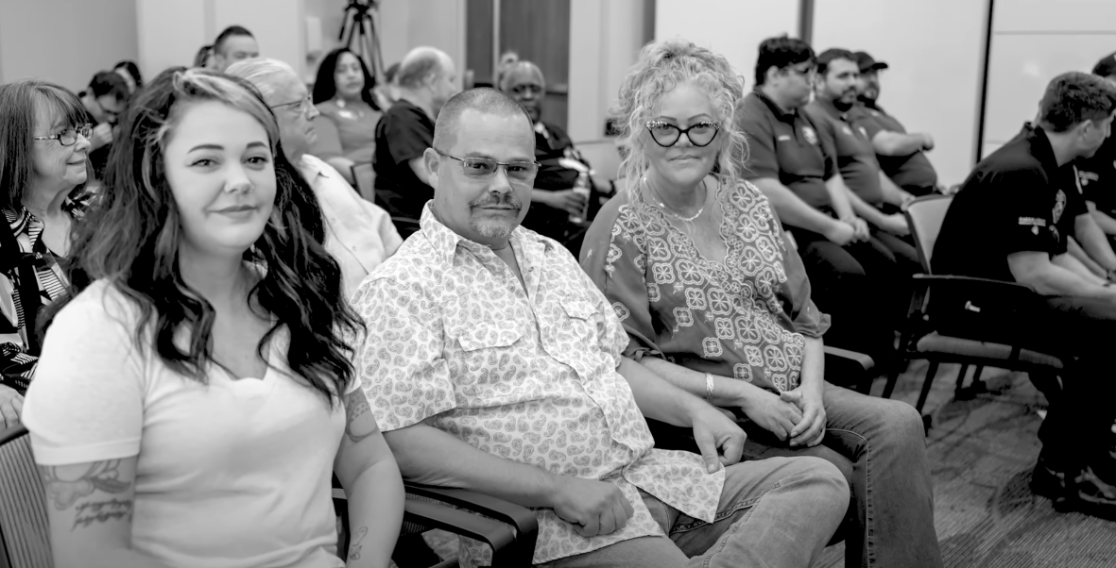Craig Box spent Father’s Day caulking windows and power washing the back of his house in Tomball to get a jump on preparations for his daughter’s upcoming birthday party. Afterward, he climbed into the family hot tub, which provided cool relief from the 90-degree temperatures since it was turned off.
April Box took one glance at her husband of 32 years and knew something was wrong. She thought he could be dehydrated. Then Craig said his chest hurt. They went inside, and Craig drank some water, but he immediately threw up. He headed upstairs for a shower. When April checked on him minutes later, Craig told her he needed to change his lifestyle of smoking and drinking. April returned to the kitchen to check the pasta on the stove, and before long, she heard Craig fall.
She rushed upstairs and found her 53-year-old husband unconscious. April grabbed the phone from his hand and dialed 911. She began chest compressions, which she had learned in prior CPR training, and kept pumping as she listened to instructions from the 911 dispatcher. He counted to help April time the compressions. At one point, Craig started spitting blood.
“I was in full-blown panic, you know, yelling for God to help me, yelling at the 911 operator,” said April, who kept up the exhausting chest compressions for 11 minutes.
Finally, a Harris County constable came through the door, which was miraculously unlocked, and took over. Before long, the “whole street was lit up” with first responders. They used an automated external defibrillator, or AED, to try to shock Craig’s heart back to life as April watched helplessly.
“I didn’t know if he was dead or alive,” she said. “They told me they were going to take him to St. Luke’s. One of the EMTs told me he couldn’t make any promises that he would make it.”
Craig had suffered a heart attack and cardiac arrest.
“He had to be shocked seven to eight times by the EMS and emergency room staff,” said cardiologist Dr. Wasiq Rawasia, who was on call that day at St. Luke’s Health-The Vintage Hospital.
A neighbor drove April to the hospital, allowing her to call the couple’s two adult daughters and other family members, who rushed to the ER and prayed as they waited for answers.
Craig was taken to the cardiac catheterization lab where Rawasia discovered Craig’s main artery, the left-anterior descending artery, or LAD, was completely blocked. Rawasia needed to insert a stent to reopen it, but Craig’s heart kept stopping.
“I think I ended up shocking him maybe five to six or maybe even seven times as I was doing the stent with ongoing CPR, shock, CPR, shock,” Rawasia said.
Eventually he inserted two stents along with a balloon pump to support Craig’s heart, which was weakened from all the shocks. Next came the long wait to see how Craig would recover. He was placed in a medically induced coma for several days. He suffered a stroke.
When Craig was weaned off the drugs, April wondered what condition he would be in. Would he remember her? When he woke up and looked at her, April asked if he knew who she was.
“Hey, babe,” he said.
Rawasia was “very surprised” with Craig’s recovery.
“The way he looked for the first two, three days, I was not expecting that positive outcome,” he said, “but he made a remarkable recovery.”
Craig was in the hospital for two weeks before leaving on July 1 with no physical or neurological deficits. He had an implantable cardioverter defibrillator (ICD) placed in his chest by Dr. Ilyas Colombowala because his heart kept experiencing extremely dangerous ventricular fibrillation, the most serious abnormal heart rhythm. If needed, the ICD can shock Craig’s heart into normal rhythm.
Craig went to a rehab hospital before eventually returning home. In a few short weeks, he was cleared to return to work as a superintendent at a pipeline manufacturer. Craig doesn’t remember any of the events, and his first recollection was being moved from the hospital to rehab.
One thing he does know is what caused his heart attack: smoking at least two packs a day for decades.
“Absolutely, no question about it,” Rawasia said.
The cardiologist knows smoking is a leading risk factor for heart attacks and tells his patients to quit because he can only do so much.
“I’m here trying to make sure things go well, and then you go home, and it’s like, you might as well drive a car without a seatbelt above the speed limit,” he said.
Craig said he’s doing his best to quit smoking.
“Now I’ve got a $50-a-week Dum-Dums habit,” he said.
The man who rarely saw a doctor now advises others to see one on a regular basis.
“At 53 years old, I've done absolutely everything that a man my age shouldn’t have done and neglected the things that I should have paid attention to,” he said.
Rawasia said he recently saw Craig during an office visit, and his heart’s function, or its ability to pump, has improved considerably since his heart attack.
“We always see patients coming in at their sickest, but it’s always good to see them when they are recovered to see the results of the work that the staff has put in,” Rawasia said. “It’s good also for the patients to see the staff when they’re well. ‘OK, these are the people who gave me the second lease on life.’ ”





